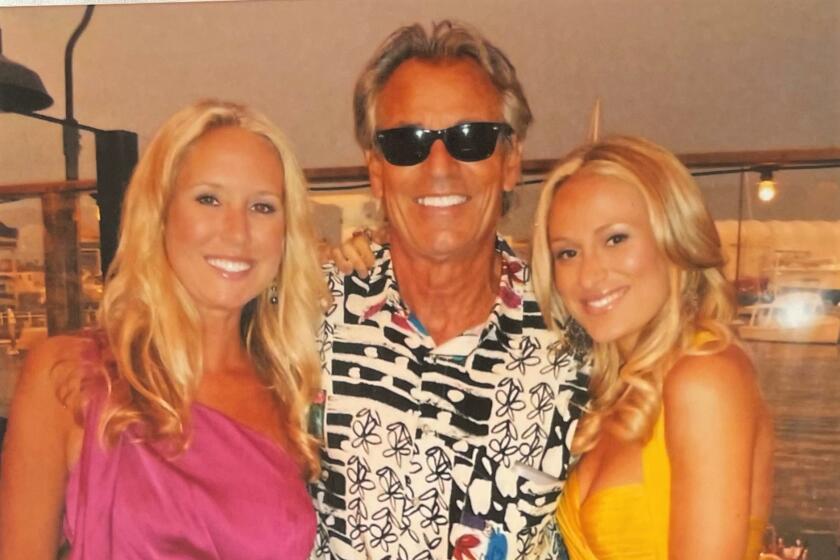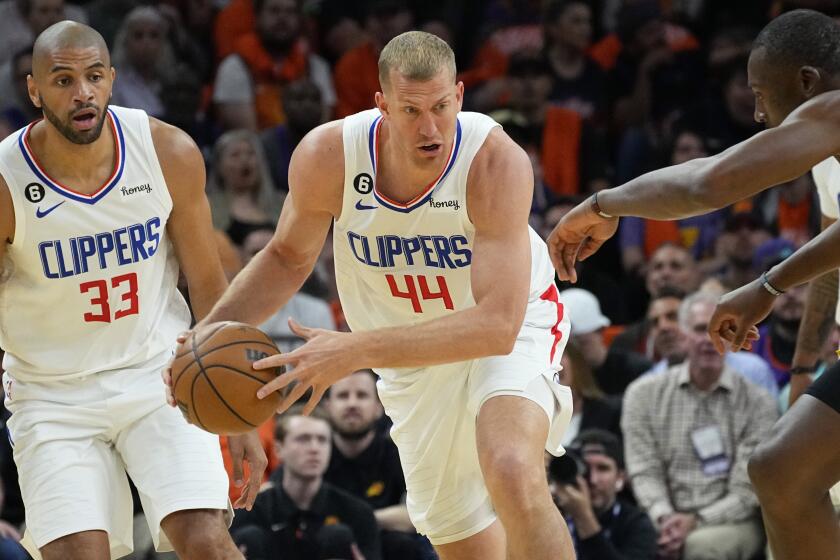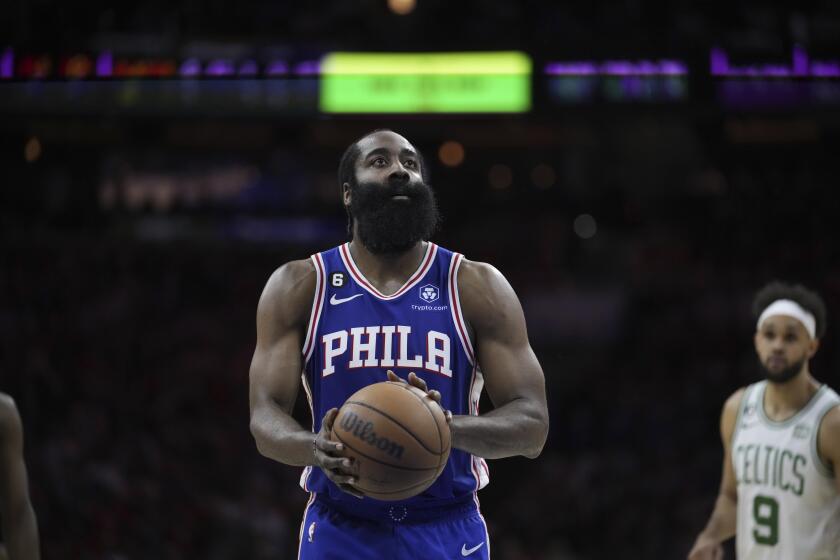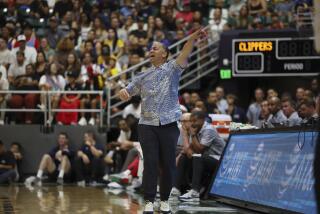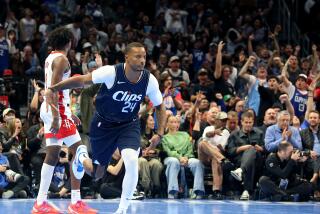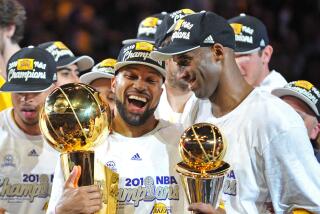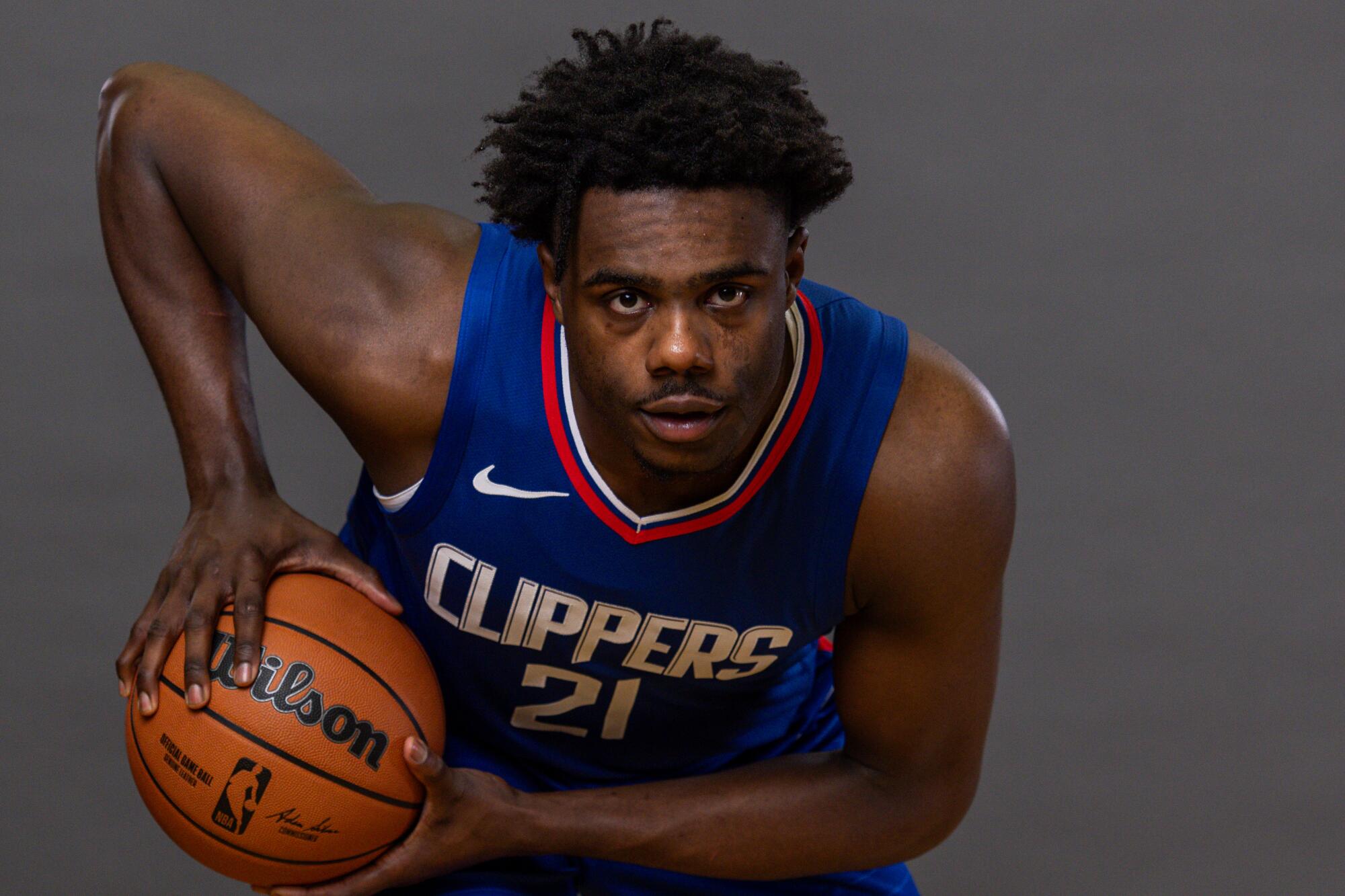
The basketball game that changed Greg Brown’s life and set the course for that of his oldest son came on a winter night in 1996 in the Philadelphia suburbs.
Brown had come a long way from his Huntsville, Ala., home to escort a player from the high school team he coached on a recruiting visit to La Salle University. One night, with the recruit occupied, Brown was invited by Joe Bryant, a La Salle assistant coach, to watch a high school game featuring Bryant’s teenaged son.
The coaches shared a car ride to the game.
“I say to him, ‘Coach, how good is your son?’” Brown said. “He’s like, ‘Ah he’s OK, he’s OK. He’s got some work to do but he’s going to be OK.’”
Bryant had undersold his son, Kobe, by a bit. Brown watched as, only months before he was selected in the 1996 NBA draft, the future Hall of Famer Kobe Bryant roamed the back line of his high school’s zone defense as a center, appeared as if unstoppable as a point guard, whipped assists and grabbed rebounds.
Bob Thate, a Southland high school star and college All-American, was a reknowned shooting coach for high school, college and pro basketball players.
“He just had this air of a champion about him,” Brown recalled. And the most impressive part to Brown was still to come.
Standing in the high school’s hallway with Bryant’s father afterward, Brown marveled as several students, each speaking a different language, congratulated Kobe, who thanked them in their language.
“When I heard him speak to those guys in those different languages that just blew my mind,” Brown said. “That did everything. He dotted all the Is and crossed all the Ts. I said my son has to be like this.”
Brown’s first child was born four years later — a son named Kobe.
Kobe Brown grew up in Huntsville watching Lakers games, imitating his namesake’s moves off the television screen. As a star at Lee High School, where over the past two decades Greg Brown has become one of Alabama’s most successful coaches, Kobe also was used as a center on defense and point guard on offense. Twenty-seven years after Bryant was selected 13th overall in the NBA draft and began his career in Los Angeles with the Lakers, Brown was taken 30th overall by the Clippers in late June.
The influence is unmistakable. It is also far from the only one that led Brown to become a 6-foot-8 forward the Clippers drafted to help keep their championship window open longer by adding youth and skill into one of the NBA’s older rosters.
And critically, there has always been his basketball family’s self-described “golden rule.”
“We always had one rule here,” Greg said, “and that was be the type of player that people want to play with.”
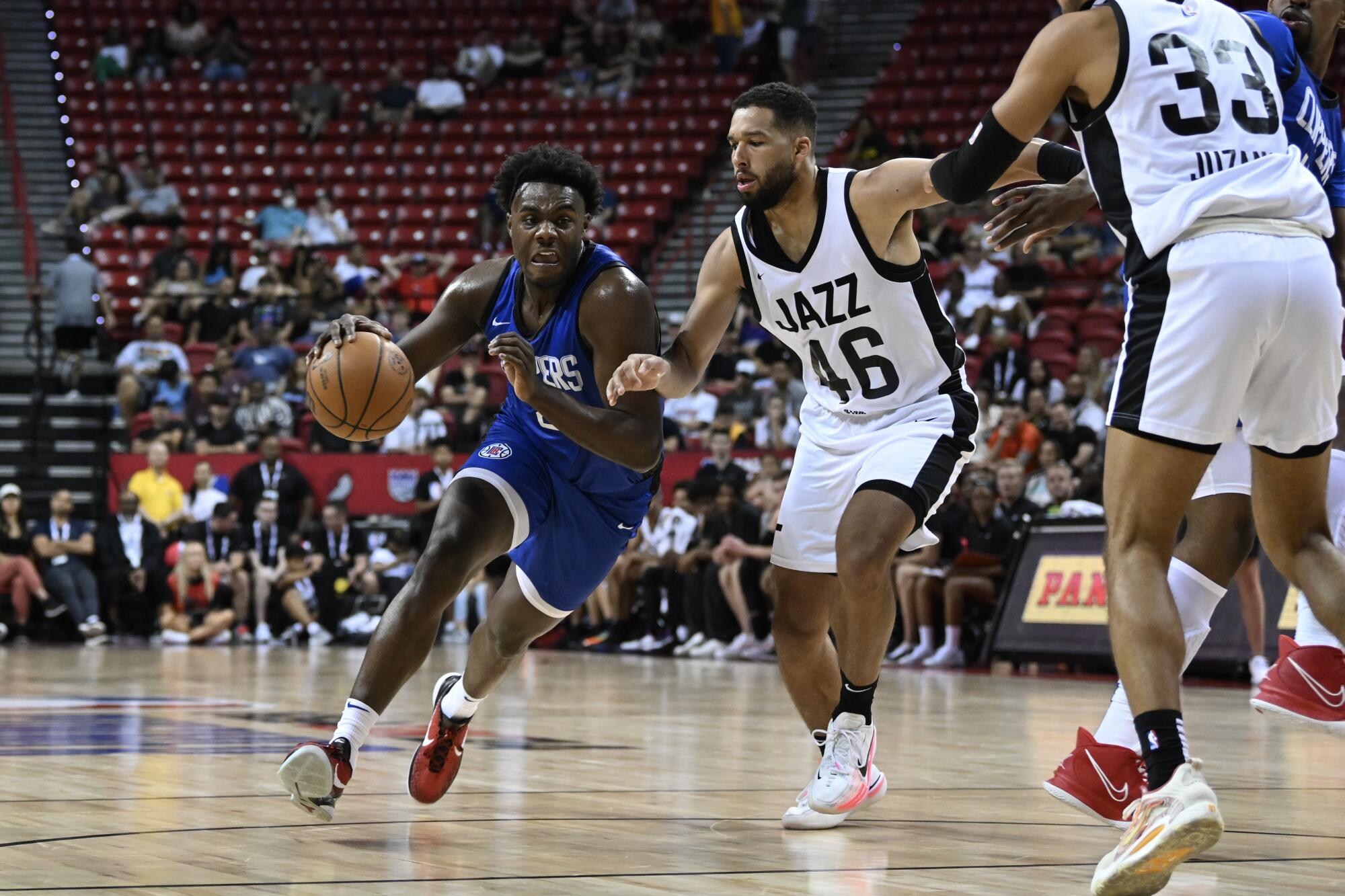
“He can do a bunch of different things to complement the cast that we have already. He knows he’s a basketball player first. He doesn’t hang his hat on scoring.”
— Dahntay Jones, Clippers assistant coach, on Kobe Brown
The edict could have implications on this Clippers season. Filled with starters and rotation contributors returning from last season, the Clippers’ roster is not the kind made for a rookie to walk into and find much opportunity to play. If there is any suited to succeed in the face of limited minutes and a changing role within coach Tyronn Lue’s rotation, it might very well be a player of Brown’s background, whose unselfishness regularly cost him exposure as a recruit, but at 23 could prepare him to be malleable enough to fit his new team’s needs.
“That’s my biggest thing all my life is just wanting to be versatile, being able to do everything on the floor,” Brown said last month, after a 35-point outburst during summer league game that included seven three-pointers, eight rebounds, four steals, three assists and two blocked shots. “I’m not hunting for 20, 30 points. If it happens, it happens.”
For every clip of the famous Bryant that Brown mimicked from afar, he picked up more by observing his family. He tagged along to watch his father’s pick-up games as a child and remembers noticing the way his father, a former college guard, passed. But the blueprint, Greg said, was having his sons, including younger brother Kaleb, watch highlights of a different Laker.
Mason Plumlee is back with the Clippers for the 2023-24 season and he explains why he believes in Kawhi Leonard, Paul George and Russell Westbrook.
“They would always sit with me on my lap and watch games when they were like 4 and 5,” Greg said. “Magic was the idea. My vision for them was to be more of a Magic Johnson. So we did a lot of watching him and — they got excited about what I got excited about and that’s the way kids usually are. If you’re a father and if something excites you about something that you’re watching, they make it excite them, too. So when they see it happen again, they’ll say, ‘Dad dad dad dad!’”
By 7, Kobe Brown was spending afternoons at Lee High’s practices and game nights from the team’s bench, where he watched his father coach a team built around a system that rewarded players who were connectors and demoted those who acted as gunners. His unwitting influences included Darian Stewart, a future Super Bowl-winning defensive back with Denver who, at 5-foot-11, unfailingly made the right decisions and played with physicality.
“Kobe did sometimes have suggestions about a play he thought we should run or, ‘Dad why is he not getting the rebound?’” Greg said. “Or, ‘Why is this guy, why is this kid, not doing this?’ Or, ‘Dad, I think you should have put so and so back in.’ I got that a lot.”
The scope of influence on Kobe Brown began to extend as he grew. Beginning in sixth grade, Brown started training in Huntsville at a facility led by Kelly McCarty, a former professional whom Brown calls his “mentor.” McCarty once told the Kansas City Star that he noticed Brown’s dogged determination to perfect new drills, and the way he would coach Kaleb in the gym. Brown wore No. 24 because of Bryant in high school and in college at Missouri but chose No. 21 with the Clippers because of McCarty, he said.
The work led Brown to all-state accolades in high school, aided by a growth spurt that left him 6-4 by his freshman season. At nearly 250 pounds, and trained to be a point guard, he had enough size and skill to win Huntsville’s region player of the year. Yet his style, built to make the right pass and shoot efficiently on smart, open shots, was not engineered to draw eyeballs on the the summer recruiting circuit.
“I used to go to camps and everybody was hunting their own shot and I could never stand out because I wanted to get guys the ball,” Brown said.
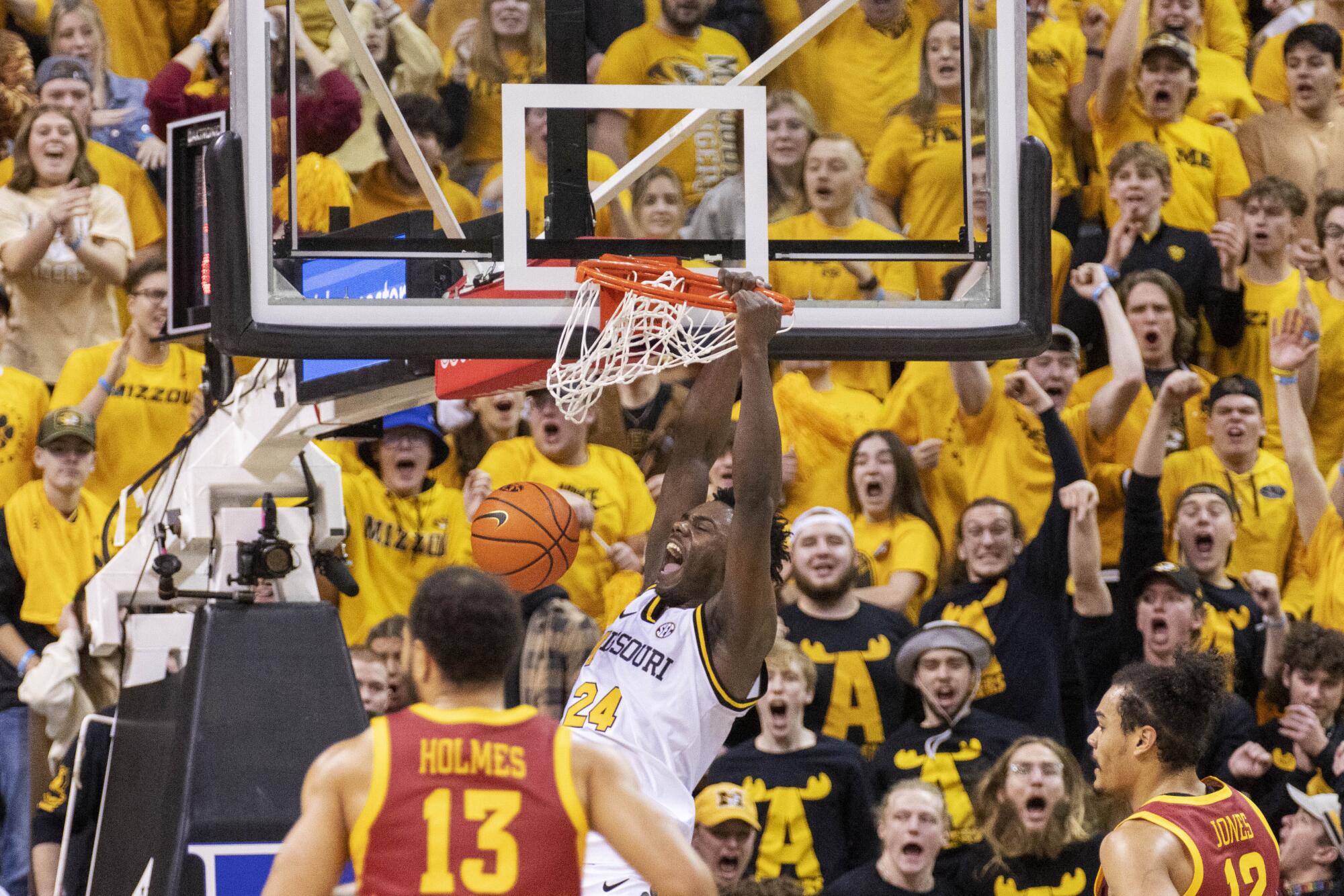
Believing others who scored more earned more attention, Brown occasionally pushed back on the central guiding principle of his basketball life. Brown’s father had encountered this before, when his son was smaller. He knew his basketball philosophy was not always the easiest sell — “I used to tell him when he was little, I said, ‘but you made it fun for your friends, isn’t that important, too?’”
But it was never to the degree as when Brown was in high school.
“That was one of my down times for when I questioned myself on how I raised him, to be honest, because on the AAU teams, they will rank other guys higher than him that may not have been as talented but they they would score 20-something points a game but they were shooting about 17, 18 shots,” Brown‘s father said. “I said let’s just go with the right thing, and I guarantee you we’ll get further than those guys as that’s so-called ranked higher than you. And lo and behold, it worked out that way.”
It worked out because at Missouri, where the Browns had anticipated Kobe playing on the wing, coach Cuonzo Martin made him a power forward who later moonlighted as a ballhandler. It led to 20% three-point shooting Brown’s first three seasons as his perimeter play decreased, but also forced Brown to grow more comfortable playing in traffic with physicality while defending bigger opponents.
When Martin was dismissed, a new coach, Dennis Gates, brought with him an offense that opened space for cuts and shooting by stationing more players — sometimes all five — around the three-point line. For Brown, it felt like a return to his comfort zone, affecting games as a passer, dribbler and scorer on offense.
The title window is closing for the Kawhi Leonard-Paul George star combination. The Clippers must trade for James Harden to win that elusive ring in this last-chance season
Tigers assistant Charlton Young joined Gates’ Missouri staff from Florida State, where he coached Terance Mann. In Brown, Young said he saw the same ability to make winning plays that has turned Mann from a rookie on a two-way contract into a rotation player so highly regarded that the Clippers have not shown interest in including him in any trade for James Harden.
“Instead of taking 500 or 1,000 shots he came in and took 250 perfect shots a day,” Young said. “He came in and stuck the landing with his balance on each one.”
The footwork and confidence helped Brown make 45.5% of his three-pointers as a senior last season, and earned academic All-American honors. While the Clippers have not saddled Brown with the expectation of maintaining that three-point accuracy, there is a strong belief within the front office that his mechanics can sustain a legitimate deep threat.
“Coach Martin made him a tougher player, which was perfect for him for the NBA because he will guard anybody,” Greg Brown said. “... And then Gates takes him to the next level of being who he really is — or letting him get back to who he really was.”
Turning down open shots too often, even with the intent of finding a better one, has proven to be a surefire way for Lue and his staff to lose confidence in a player. In Las Vegas, the Clippers’ summer coaching staff, led by assistant Dahntay Jones, nudged Brown to be ready to take as many open shots as teams would give him.
In less than two weeks, Jones said, Brown had impressed him with his “unique skill set” molded in part by those around Brown who had pushed him throughout his earliest years to play like a well-rounded teammate, not an overbearing one. At several points during Brown’s 35-point game in Las Vegas, Lue, seated on the baseline next to assistants, uttered compliments after Brown’s steals and blocks.
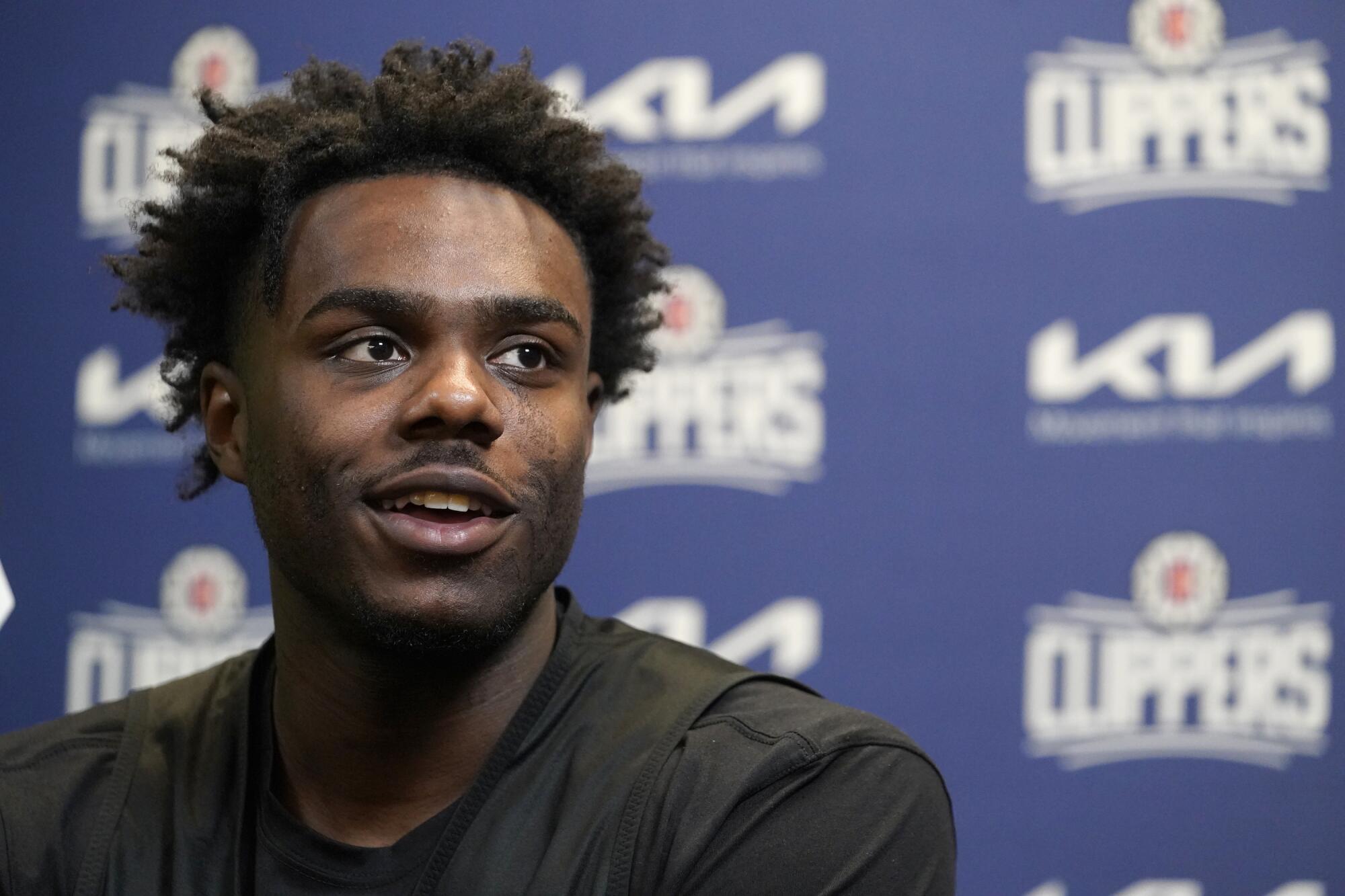
“He can do a lot of things without having the ball in his hands, as you saw,” Jones said. “...He can do a bunch of different things to complement the cast that we have already. He knows he’s a basketball player first. He doesn’t hang his hat on scoring. He hangs his hat on having a positive effect on the game of basketball.”
After his 35-point breakout game in Las Vegas, Brown stopped in a tunnel underneath the Thomas & Mack Center to catch his breath. A new Clippers teammate, veteran guard Norman Powell — himself a Bryant devotee as a child — approached and crashed his interview by putting one arm around Brown and the other around the interviewer while speaking directly into a recorder to ensure his words were noted.
“He’s going to keep hooping, he’s gonna stay confident, keep doing his thing, man,” Powell said.
Brown, as usual, was not looking for attention. It had found him anyway. He was most excited, he said, to practice with the full Clippers roster, the latest group that will influence his game.
“I know when I get with the other guys it’ll be a little different,” Brown said, “and I’m ready for that.”
More to Read
Get our high school sports newsletter
Prep Rally is devoted to the SoCal high school sports experience, bringing you scores, stories and a behind-the-scenes look at what makes prep sports so popular.
You may occasionally receive promotional content from the Los Angeles Times.

